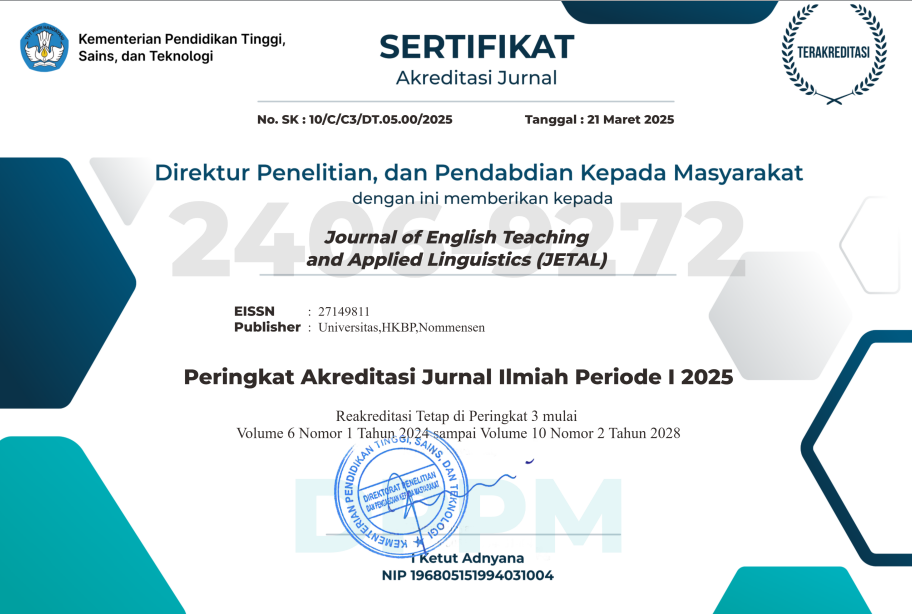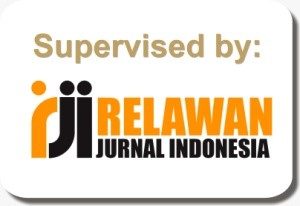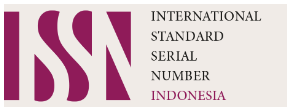THE SEMIOTICS OF BATIK GONGGONG THEME
Abstract
The rapid development of the times can lead to a lack of understanding of culture. A lack of understanding of a culture can lead to a lack of understanding of the message conveyed by a work of art. One of the cultures in Indonesia is batik. Batik is the result of a touch of art and technology. Likewise, the Riau Islands have batik, that is Gonggong batik. Therefore, this study has the objective of knowing the signifier, signified, denotative and connotative meanings of the five Gonggong (Strombus Canurium) batik themes created by Mr Yuspiq. In this study using qualitative descriptive research methods with Roland Barthes semiology analisis approach. The results of this study indicate that the denotative meaning of Gonggong is an icon of the Riau Islands. The connotative meaning is to describe Malay community leaders as having courage, religion, social spirit, harmony, sincerity, and humility in facing life
References
Barthes, R.1967. Element Of Semiology ( Trans Lavers And Smith). New York
Berger, A A. 2010. Introduction to Semiotics: Signs in Contemporary Culture. Yogyakarta: Tiara Wacana.
Chandler, D. 2007. Semiotic: The Basics (Sec Ed). New York: Rout ledge
Dinas Kebudayaan Kepri. 2016. Motif Ornamen Khas Melayu Kepulauan Riau. Retrieved From URL: https://disbud.kepriprov.go.id/motif-dasar-ornamen-khas-melayu-kepulauan-riau/.
Eco, U. 1979. A Theory Of Semiotics. Indiana University Press: Bloomington. Retrieved From URL: https://books.google.co.id/books?id=Tsh5CgAAQBAJ&dq=journal+semiotic&hl=id&lr=
Iware Batik. 2009. Keluak Daun Pakis. Sumatra Barat. Retrieved From URL: https://www.iwarebatik.org/keluak-daun-pakis/?lang=id#:~:text=Tanaman%20pakis%20mewakili%20sikap%20bijak,dan%20kemakmuran%20bagi%20kehidupan%20seseorang.
Leonardo, S. 2018. Batik Gonggong. Retrieved From URL: https://budaya-indonesia.org/Batik-Gonggong. Diakses tanggal 23 Februari 2022.
Mulyanti, K S & Rimayanti, N. 2019. Semiotic Analysis Of Batik Bono As An Icon Of The Pelalawan District. JOM FISIP (6): 1-9.
Muntazori, A F. 2013. “Simbol Bintang Delapan Sebagai Identitas Masyarakat Muslim.” Deiksis 5(1): 58–80.
Nadira, Rifa. 2018. Roland Barthes’ Denotation, Connotation, And Myth In The Change Of Four Starbucks Logos: A Study Of Semiotics. Universitas Darma Persada. Retrieved From URL: http://repository.unsada.ac.id/cgi/oai2
Nugroho, H. 2020. Pengertian Motif Batik Dan Filosofinya. Retrieved From URL: https://bbkb.kemenperin.go.id/index.php/post/read/pengertian_motif_batik_dan_filosofinya_0
Nur, A. 2017. Strategi Komunikasi Pemasaran Batik Gonggong “Lawana” Tanjung Pinang Dalam Membangun Brand Awareness. JOM FISIP (5)1: 11
Nurimba, Y., & Muhiddin, A. (2021). Analisis Semiotika Roland Barthes Pada Iklan Rokok Apache Versi Hidup Gue Cara Gue. Journal of Communication Sciences (JCoS), 3(1), 18–25. https://doi.org/10.55638/jcos.v3i1.537
P, T. 2021. Motif Paku Adalah Tentang Kehidupan Manusia. Retrieved From URL: https://diskominfo.kaltimprov.go.id/index.php/rubrik/motif-paku-adalah-tentang-kehidupan-manusia .
Prayitno. (2019). Produk Nasional : Batik Dan Tenun. (Susilo, Editor) Retrieved From URL: https://books.google.co.id/books?hl=id&lr=&id=QWj-DwAAQBAJ&oi=fnd&pg=PT2&dq=seni+kerajinan+batik+indonesia&ots=CRHhn_uXIP&sig=WzCtqqHUKEOKbAgZ9xNyK2agRlY&redir_esc=y#v=onepage&q=seni%20kerajinan%20batik%20indonesia&f=false
Purba, N & Tambunan, K. 2021. Semiotic Analysis Of Roland Bartes On Wardah Advertisement Version “ I Face Of Indonesi”. LingLit Journal Scientific Journal for Linguistics and Literature, 2(3), 113–126. https://doi.org/10.33258/linglit.v2i3.511
Sipahutar, R., & Arianto, T. (2019). an Analysis of Semiotic Riffaterre in. Basis, 6(2), 1–12.
Sobur, Alex. 2003. Analisis Text Media: Suatu Pengantar Analisis. Bandung: Rosda Karya.
Suharson, A. (2021, November). BATIK DALAM KONSTELASI BUDAYA GLOBAL: MERAJUT KEMBALI NILAI-NILAI ESTETIKA, ETIKA, DAN RELIGIUS. In Prosiding Seminar Nasional Industri Kerajinan dan Batik (Vol. 3, No. 1, pp. 13-1).
Taufiqoh, B. R., Nurdevi, I., & Khotimah, K. (2018). Batik Sebagai Waisan Budaya Indonesia. Seminar Nasional Bahasa Dan Sastra, 3, 58–65. http://researchreport.umm.ac.id/index.php/
Triwardani, R & Rochayanti, C. (2014). Implementasi Kebijakan Desa Budaya dalam Upaya Pelestarian Budaya Lokal. Reformasi. Vol 4 No 2.
Yusuf, A. M. (2016). Metode penelitian kuantitatif, kualitatif & penelitian gabungan. Prenada Media. Retrieved From URL: https://books.google.co.id/books?hl=id&lr=&id=RnA-DwAAQBAJ&oi=fnd&pg=PA2&dq=Metode+Penelitian:+Kuantitatif,+Kualitatif,+%26+Penelitian+Gabungan.&ots=JxetFhTF4k&sig=nw4Dbn82Wk02tV5u8bCVpNh7VYE&redir_esc=y#v=onepage&q=Metode%20Penelitian%3A%20Kuantitatif%2C%20Kualitatif%2C%20%26%20Penelitian%20Gabungan.&f=false
Authors retain copyright and grant the journal right of first publication with the work simultaneously licensed under a Creative Commons Attribution-ShareAlike 4.0 International License (CC BY-SA 4.0) that allows others to share the work with an acknowledgment of the work's authorship and initial publication in this journal.
Authors are able to enter into separate, additional contractual arrangements for the non-exclusive distribution of the journal's published version of the work (e.g., post it to an institutional repository or publish it in a book), with an acknowledgment of its initial publication in this journal.
Authors are permitted and encouraged to post their work online (e.g., in institutional repositories or on their website) prior to and during the submission process, as it can lead to productive exchanges, as well as earlier and greater citation of published work (See The Effect of Open Access).






